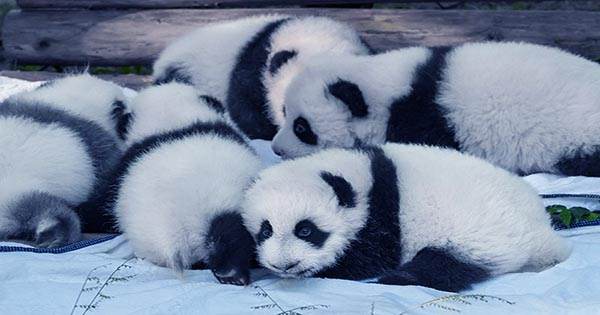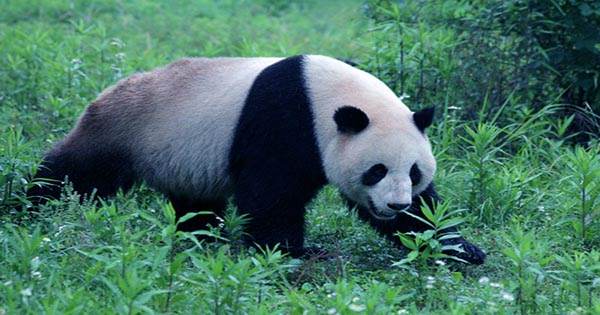The first-ever live birth in captivity of a giant panda occurred on September 9, 1963, when Beijing Zoo welcomed a small bald bear into their care. After nearly six decades, Zoo Aquarium Madrid now has an even bigger bundle of joy to share with the world, as its resident panda gave birth to twins on September 6. The tiny, pink, shrieking jelly beans each had a healthy pair of lungs when they were born, wriggling and squealing in a way that is typical of newborns, if not a little headache-inducing.
According to zoo reports, the excitement started at 4 a.m. on Monday when Hua Zui Ba’s first contractions started. She started making vocalizations a few hours later, and the first baby arrived around 8.30 a.m., wailing (see the video). Around lunchtime, the second twin arrived, which was unsurprising given that half of all panda births are twins. In the wild, this rarely results in both cubs surviving, since the parent will eventually prioritize the stronger of the two.

When a young panda is born, the mother gathers them and cleans them, which can appear weird because, unlike their large, fluffy, black and white parents, baby pandas are born nearly bald. They’ll be small, pink, and vocal for around four months, and will be completely reliant on their mother. Being a panda parent obviously necessitates a great deal of patience. When compared to their parents, baby pandas are extremely little. They’re one of the smallest mammal newborns, weighing only 100 grams (35 ounces) in comparison to their mother.
The bones of newborn pandas are underdeveloped compared to other mammals, according to a 2019 study on why panda cubs are so little “According to Peishu Li, the study’s co-author, “a 28-week human fetus” “They’re virtually undercooked,” says the chef.”
These births are critical for endangered species like giant pandas (Ailuropoda melanoleuca), as captive breeding programs can sustain genetic variety while wild breeding animals regain their footing. However, pandas are notoriously bad at putting it on, so they’ll need all the help they can get.
Unfortunately, persuading pandas to mate hasn’t always been easy for zookeepers. A female’s mating window was sadly missed due to her partner’s far greater interest in munchies than sex, as seen in a scenario from Copenhagen Zoo earlier this year.
As a result, zoos and wildlife centers have tried everything from porn to artificial insemination to conceive female pandas, however even fertilized embryos frequently fail to implant.














